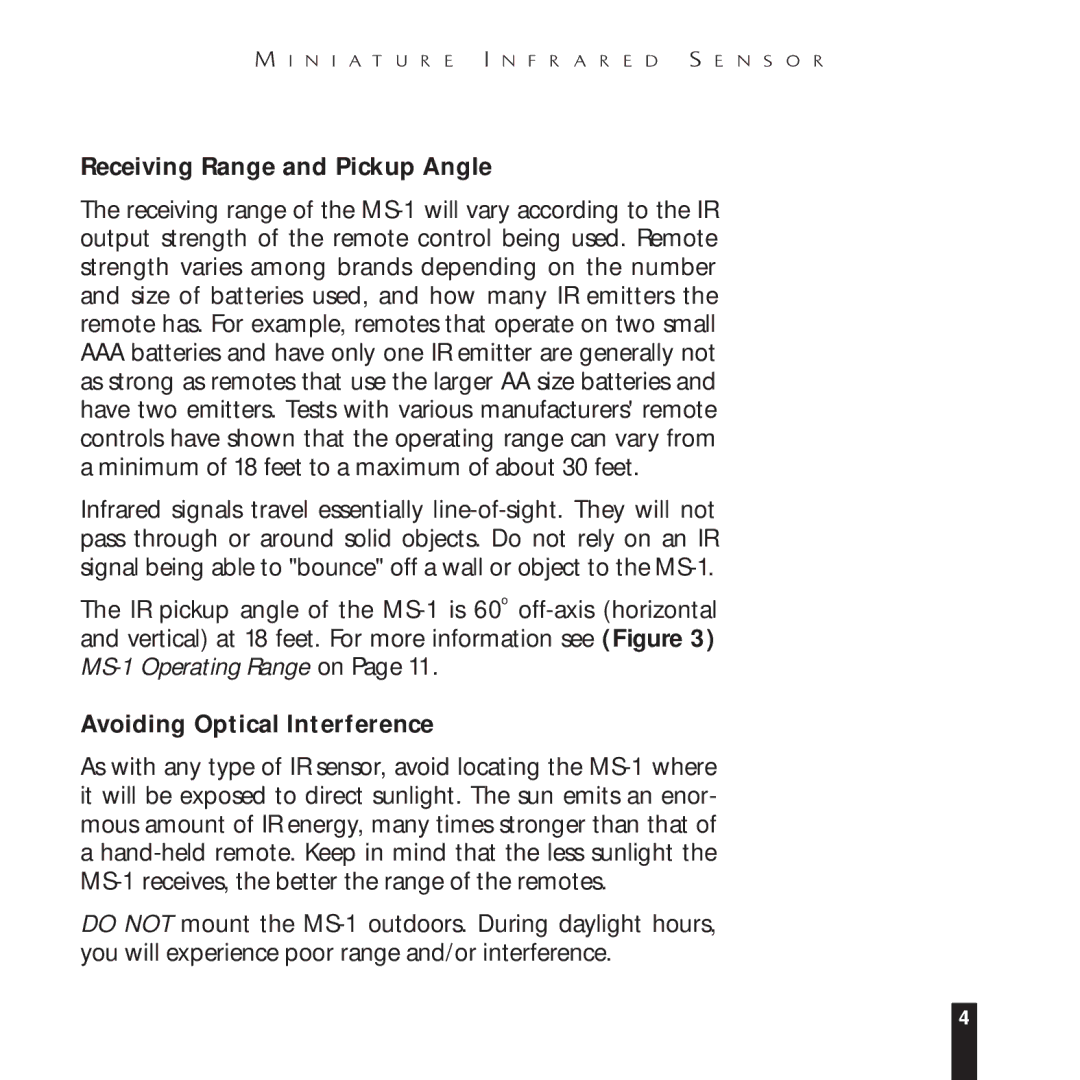
M I N I A T U R E I N F R A R E D S E N S O R
Receiving Range and Pickup Angle
The receiving range of the MS-1 will vary according to the IR output strength of the remote control being used. Remote strength varies among brands depending on the number and size of batteries used, and how many IR emitters the remote has. For example, remotes that operate on two small
AAAbatteries and have only one IR emitter are generally not as strong as remotes that use the larger AA size batteries and have two emitters. Tests with various manufacturers' remote controls have shown that the operating range can vary from a minimum of 18 feet to a maximum of about 30 feet.
Infrared signals travel essentially line-of-sight. They will not pass through or around solid objects. Do not rely on an IR signal being able to "bounce" off a wall or object to the MS-1.
The IR pickup angle of the MS-1 is 60o off-axis (horizontal and vertical) at 18 feet. For more information see (Figure 3) MS-1 Operating Range on Page 11.
Avoiding Optical Interference
As with any type of IR sensor, avoid locating the MS-1 where it will be exposed to direct sunlight. The sun emits an enor- mous amount of IR energy, many times stronger than that of a hand-held remote. Keep in mind that the less sunlight the MS-1 receives, the better the range of the remotes.
DO NOT mount the MS-1 outdoors. During daylight hours, you will experience poor range and/or interference.

